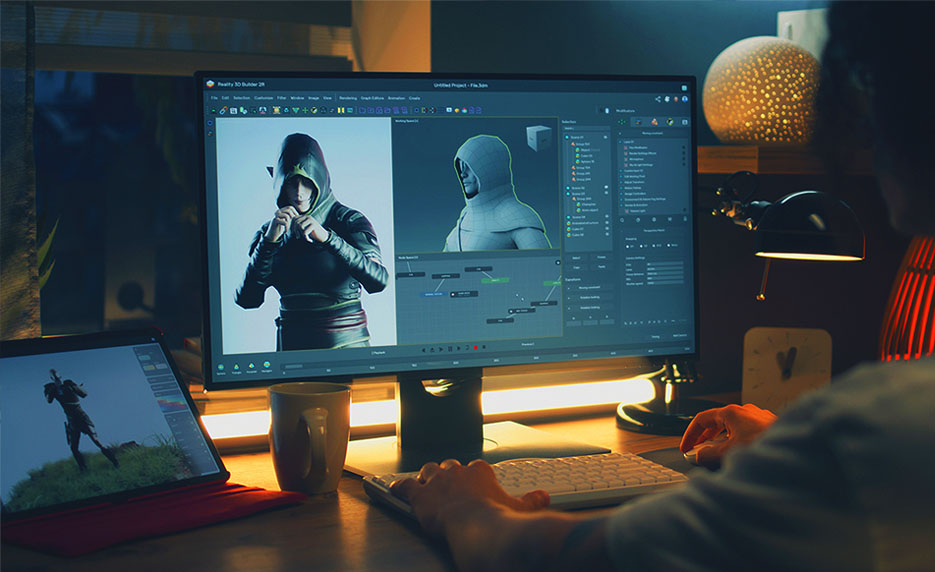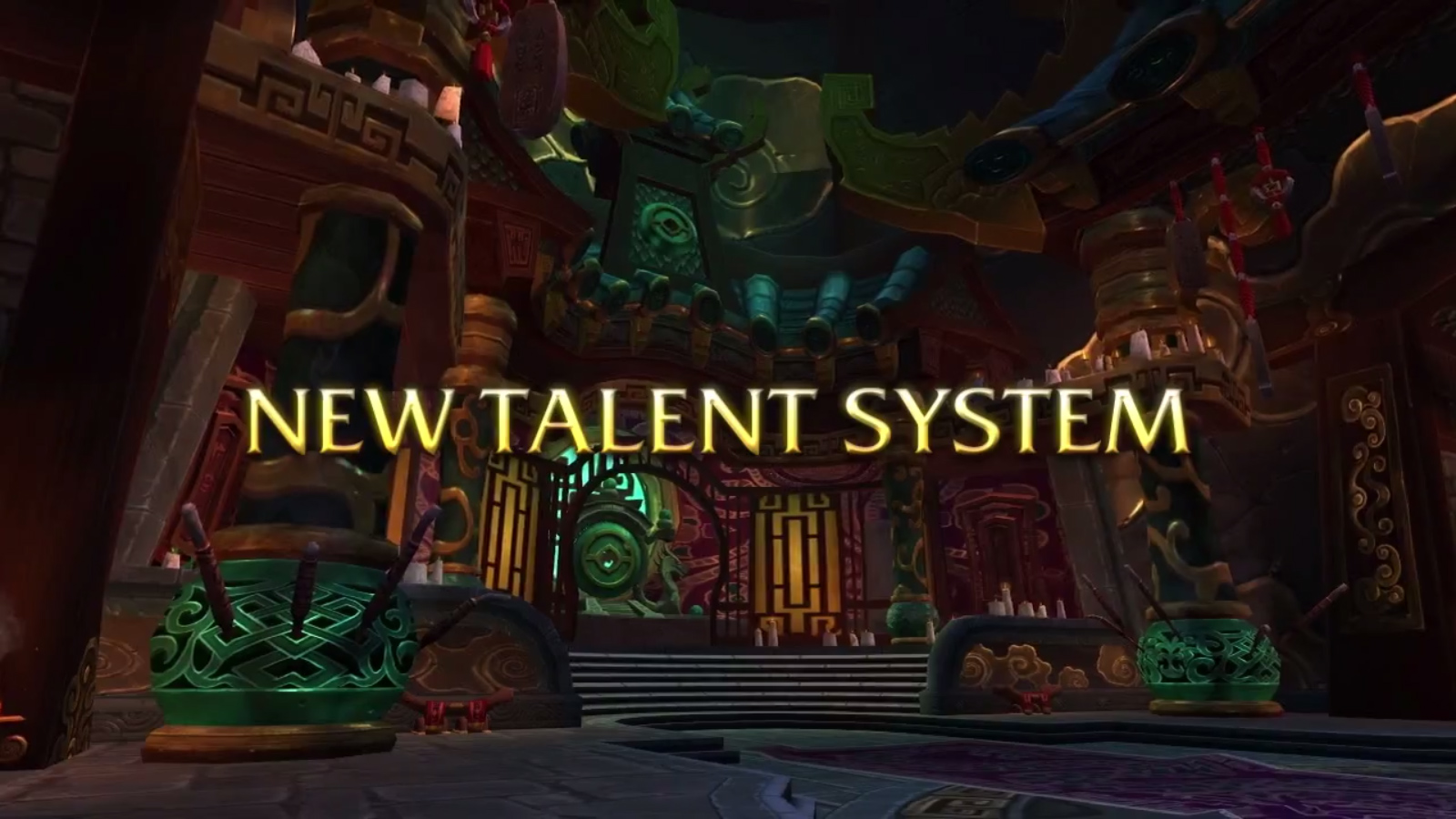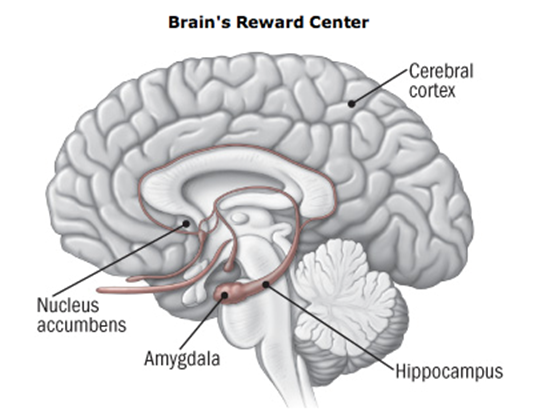"Class Balance" Isn't Really Class Balance
This is a topic I was professionally involved in a while back, and although there are few internal players within the industry that are really aware of it presently, it's something I've always wanted to share in a more public venue. I've talked to some personally about it in private discussions, but I'm glad that I can finally talk about this after almost a decade.
What Game Developers Are Missing
To understand the reasoning behind Class Balance, you must first understand game design holistically.
Game Design is comprised of several verticals. A Game Developer is obviously aware of some low-level game design verticals such as programming, graphic design, illustration, UI design, composing music, animation, documentation, and creating sound effects. And, even then, the programming category itself may be composed of several subcategories, like coding mechanics, databases, storage systems, graphic engines, drivers, netcode, etc.
These are considered "low-level game design" components. And they may also encompass other granular or technical details like level design, writing, stories, voice acting, creating quests or objectives. Simply put, there are a lot. So teams are needed, each with different specialties to build a whole game obviously.

Developers are skilled in at least one, or a multiple, of these verticals.
But.. there are also HIGH LEVEL game design aspects.
Unfortunately, it's an area with little in the way of publications or resources, and something that few developers are aware of. Even for many "professional game designers" surprisingly. It's an area of game design that's hard to describe and there is no official terminology for. There are some very good reasons why this is the case, but it's a discussion for another time. In total, I've seen about three articles throughout the entirety of the internet that just barely touch on the subject.
While I use the term "high-level game design", others may have their own personal definition for it. For example: say that someone creates a Game Design Document but they use laymans terms to explain gameplay and mechanics without any technical information. They might call this a "high-level game design document".
When I refer to high-level game design, I mean something on another level completely. It's knowing the right way to design the game. Most developers are ignorant of it and it could almost be described as a philosophy. However, a philosophy generally implies that there is a study surrounding the subject or that it's experimental. But this isn't the case. "Wisdom" might be a better way of explaining high level game design. Wisdom shows you the proper way to build the game. You may have the intelligence to build a game, but wisdom tells you how to build it right.
Generally, there several skills or verticals, seemingly unrelated to game design, at play within this field. For instance, they require that the lead developer comprehend, and understand how to implement principles related to user psychology, motivation, emotion, engagement, gameflow, neuroscience, cognitive development, conditioning, user experience, and they themselves must possess high self-awareness.
An understanding of this hidden field of game design have resulted in the most successful AAA games ever created. And the interestingly, these successful executions were cloned by other industry developers without ever understanding why they worked in the first place. Those were accidental successes, but the world has no idea. :)
The Secret "Game Design Bible"
As a side note, there exists figurative and physical "bibles" containing a wealth of high level game design knowledge that have accumulated over the decades. They're different for each person, depending on where they obtained the information, and some contain more content than others.
Just like how artists and musicians collect and archive old samples and assets for future inspiration or re-use, game design knowledge is also collected and maintained by some.
Low-level game design knowledge is very standard. But for those who were lucky enough to learn about high level game design, there have been versions of this "Secret Game Design Bible" that have been collected and collated. It only exists within the offices of an extremely limited number of Directors or Game Producers. These individuals are the ones who can repeat hit-after-hit, assuming they have full decision-making power that is.
The "Bible" is essential a formula for success. But personally, I'm only aware of two individuals within the game design industry that possess it. One used to work for Blizzard, but they left many years ago. It's difficult to describe, but once you've read it, there are ways to tell if other developers are aware of the strategies or not. You can tell by what they say or in how they implement elements within in their games. There are key indicators whether they follow the rules or not. I'm hoping that sometime in the future I can talk more about the Game Design "Bible", but it would take a very long time to write about. These are the things talked about behind closed doors after all and it would take a couple books on the subject to write about.
Anyways, this is a very long subject for another time.
Content Consumption
Alright, so there's this one engagement model of high level design that consists of Content, re-using Content, and regular delivery of new Content. Content meaning things like new environments to explore, new art assets, new maps/zones, new characters/classes, and new objectives/quests.
Note: I consider The Story (another engagement model within the paradigm) as something separate. Sometimes the new Content might expand the Story a little more, but it should always be treated as a separate entity due to its importance.Content is a lot like reading a book. You'll read through and explore the world within a book, but then once you've reached the end, there are only a certain number of times that you can re-read the book before you get bored and crave the next chapter in the series. In World of Warcraft, major patches or expansion packs are basically ways to deliver new Content. Then, using gate-locked or timed systems will assist in slowing content consumption, giving them more time to prepare the next batch. When Content is consumed very quickly, a "Content Drought" may develop as users are thirsty for new content but it's unfortunately unavailable for long periods of time.
Content delivery is just ONE of the many strategies used within that "Bible" to secure player engagement (playing the game and having fun) and retention (they keep coming back, and may bring back friends). World of Warcraft, for example, used to take advantage of several more engagement models on top of this, but they've abandoned them, instead pivoting mostly to a Content-based model. This means that it's critically important new content is regularly delivered to their users.
Interestingly, there is significant science and research behind this and something explained in the "Bible". Content Delivery is part of a strategy to maintain a type of addiction cycle of the users. And on the surface, it's something that you can clearly see for yourself. Anyone can see the results, even if they don't understand how it works.
So, to sum things up to this point: there are high-level strategies applied in game design to always make sure users are having fun, they're addicted to the game, and they keep coming back. One of the components of the strategy is Content Delivery. By providing new Content, it changes their gaming experience, keeps things fresh, and provides a variety of new things to experience. This is a critical activity required for user retention.
Class Balancing is a Lie
In ye olde days, Class Balancing was exactly just that.
When a game containing multiple character classes was released, it was obvious and expected that many unintended mistakes would be found that were not originally discovered during testing. A class ability, skill, or spell might be extremely overpowered or underpowered, effecting the balance of play between all of the classes. During combat or challenges, one player might have an unfair opportunity over another. And given the human beings natural drive to chase the path of least resistance, most players would switch over to the class with the unfair advantage.
Teams of developers would spend months researching, investigating, collecting statistics, and analyzing numbers. Changing, adding or removing abilities would have a domino effect across all classes, forcing developer back to the drawing board. It was extremely time consuming, expensive, and the players were never satisfied. They began to realize that a "final" balancing of classes was impossible.
But during their testing, something interesting was happening. An interesting metric arose when fixes were pushed: players reacted to Class Balancing Patches in the same way as New Product Launches.
This was the HOLY SHIT EUREKA MOMENT currently realized in many online games.
Class Balance is the same as delivering New Content. After all, Content is something that changed the game, it made things fresh, changed the rules, created new variables, or encouraged players to play a new class or play differently.
In the end,
- Class Balancing could now be treated more like Content, and not like technical bug fixes.
- instead of just Class Balancing as a FIX, developers could instead allow broken things to happen, or create new ones intentionally, to disrupt the power dynamics between the Classes. This in turn actually improves engagement. (Factual science supporting this related to Content Consumption and what it really is.)
- in the absence of new Content, they can introduce intentional opportunities or disadvantages into the game in order to "spice things up", change player strategies, or freshen the game. And later, it could be "corrected" through Class Balance.
- it can partially be used for minor fixes, but it's more useful as an entertainment medium that has a direct relationship to revenue generation.
- intentional imbalances can use negative or positive reinforcement to change play styles, or even force a player to create a new (overpowered) class, to further drive addiction and retention. Class Balance is an excellent way to encourage players to level a new class or even buy one.
- this also reduces stress on developers. Class Balancing become an internal meta-game because imbalance become less priority, leaving more opportunity for experimentation to see the results and adjust engagement levels.
- it gives every player the opportunity to feel "overpowered" in game, if even for a short period of time, in order to drive them to seek re-experiencing the sensation again (retention).
- unlike Content which can be exhausted, this is an infinitely repeatable psychological strategy that keeps the community engaged and entertained waiting for updates, while also providing a similar positive reaction to that of a real Content release.
- minor tweaks and game breaking bugs could be patched, but the majority of Balance related changes could be saved up and scheduled for a future release.
Class Balance fixes are now scheduled months in advance. And I don't mean correcting an imbalance. I mean that a change, that intentionally imbalances the game, is scheduled to take effect in the future. This is something most players aren't aware of since they believe Class Balance is a "reactive measure" and not something planned. But in reality, it's a constant meta-game or dance meant to juggle the existing content or introduce something new. A significant change to one ability, for example, can have dramatic changes to a standard playstyle or class selection.. so it therefore becomes "New Content" to be consumed.
Another way to think about it is like a Mom who gives all of their children time to play their favorite game, play the best character in some game, or play The King. Mom rotates through all of her children, giving them all a chance to experience a great or overpowered character, for fun and to keep it fair. This is basically what Class Balance is about. There will always be imbalance, but everyone will be given at least the chance to play the broken character. Everyone gets a chance to eat the carrot, so they always come back for more.
Class Balance is just a word
It's not just Class Balance where this type of activity takes place, it also encompasses a ton of other areas or mechanics within a video game. Class Balance seems to be the one topic that most players complain about however.
The reason for this is because users pay attention to details that only impact them directly or their ability to compete. A change in the UI system, that affects everyone, won't result in the same number of complaints that a Class Balance change will have.
Generally, players see Class Balance changes as a mistake, an unintentional change, or blame the developers for being incompetent or stupid. Why have you still not balanced the characters after three years? Why does x class get a buff, but I don't? Why did my class get a nerf, but those other five got buffs? PVP is imbalanced, it's unfair!
What these complainers are not aware of, however, is that usually it's not due to mistakes or incompetence. It might be deliberate or even RANDOM - but not an error. It has a huge impact on player retention, and
 And, it's not just about balancing the classes. There are other areas where New Content is intended for consumption, but the players have no idea that it's actually just another type of Content. New Content can be disguised in many other deployments of "tweaks", "patches" or "fixes", such as:
And, it's not just about balancing the classes. There are other areas where New Content is intended for consumption, but the players have no idea that it's actually just another type of Content. New Content can be disguised in many other deployments of "tweaks", "patches" or "fixes", such as:- New Talent Systems.
- New XP leveling parameters.
- New Skills, spells, or abilities. Changing their effect or any variable (speed, distance, etc). Or removing them.
- Squishing Damage numbers.
- Squishing Player / NPC levels.
- New types of leveling systems, like a Paragon or Promotion system used in incrementals.
- Changing the size of players, and thereby adjusting their hit boxes.
- Racial trait changes.
- Changing the UI system.
- New rewards or loot system.
- New boss mechanics.
Despite what you've heard, those new Spells/Skills, PVP changes, new Talents, Character Traits, Honor Changes, or other Major X Change in Y System/Game is not supposed to actually balance the game for you. If someone told you that, it's a lie.
... But It Doesn't Stop There.
Other than the final act of deploying the patch, and the effect that this New Content has on the players in-game, it has also become a highly useful promotional tool for the game and the company.
Even though a company is not releasing a major new expansion pack or "New Content" in the eyes of the consumer, they are still celebrated by the community for just announcing a simple bug fix. :)
Strange, isn't it?
A new patch with "Class Balance" changes is publicy declared, rather than just kept private. An official release date is announced, just like regular Content. And, these announcements are circulated to the two dozen identical fansites. The forums light up with anticipation, there are thousands of comments, people are excited, and the information is dissected and discussed at length. The company is congratulated for posting something, praise for buffing the users preferred class, and criticized by others for nerfs.
When you step far enough back, it's an interesting event. They're technically not releasing anything special (long ago, it would have been kept private), and yet it's publicly posted now while the community reacts like it's a major expansion pack. It's a great example of how both game content and the media target the same pleasure center of your brain as addictive narcotics. Something well known within the industry.
 Basically, this is what users perceive to be Class Balance. It's an illusion. It's not about fairness, competition, or balance: it's a metagame emboldening engagement and retention (or, as more commonly referred to, addiction.)
Basically, this is what users perceive to be Class Balance. It's an illusion. It's not about fairness, competition, or balance: it's a metagame emboldening engagement and retention (or, as more commonly referred to, addiction.)Path of Exile is a great example of a game that better understands some of these principles. They use infinite re-playability strategies, without the need for creating new assets, art, environments, or characters. World of Warcraft is unfortunately stuck in a loop where major new content releases are required to retain users. Path of Exile needs very limited high level content updates (e.g. UI, map systems, dynamic level design, skills/abilities) since they can constantly re-use the same old low level content (e.g. characters, environmentals, art and audio assets).

